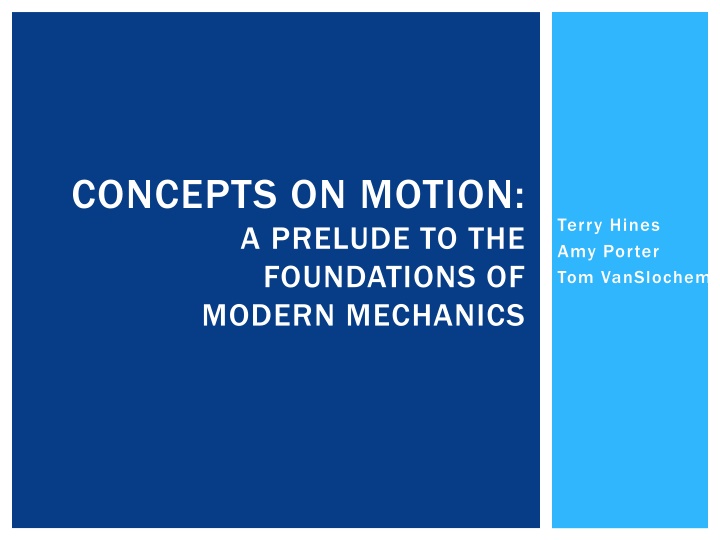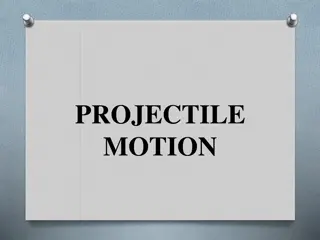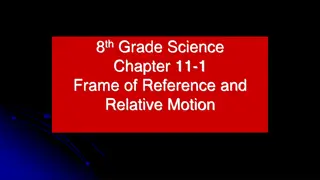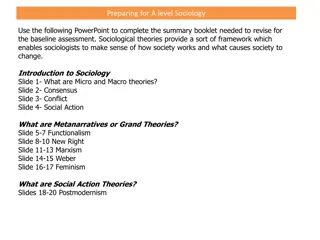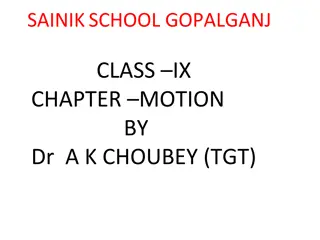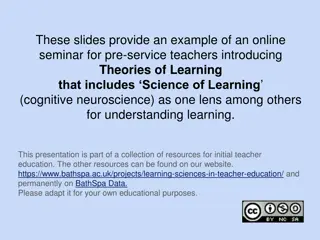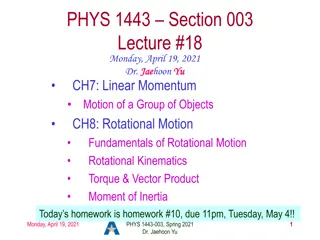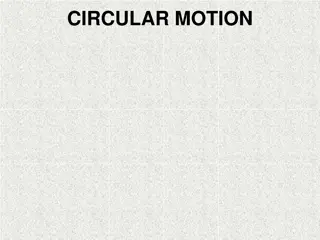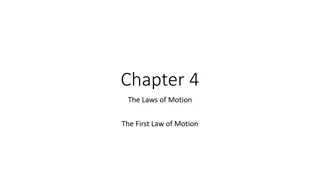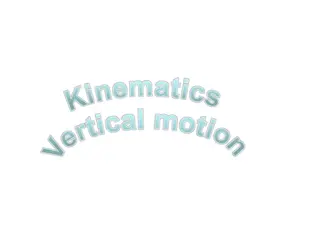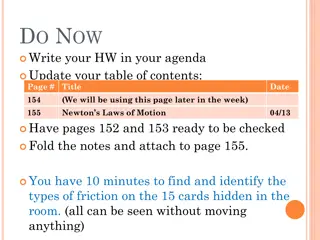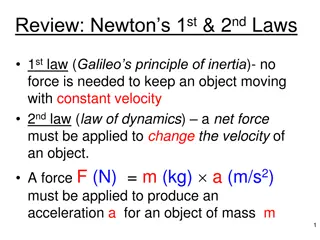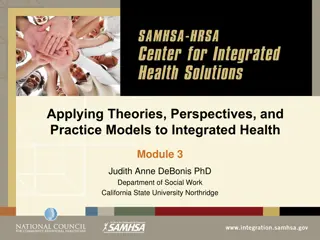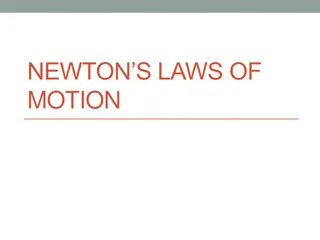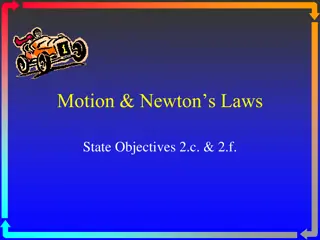Evolution of Motion Theories and Philosophers' Perspectives
Various historical figures like Aristotle, Hipparchus, John Philoponus, Avicenna & Avempace, William of Ockham, and John Buridan contributed to the understanding of motion theories. Concepts such as Impetus Theory and the views of different philosophers provide a rich tapestry of ideas that laid the groundwork for modern mechanics. The clash between traditional beliefs and emerging theories, epitomized by Galileo Galilei's work, marks a pivotal period in the evolution of our understanding of motion.
Download Presentation

Please find below an Image/Link to download the presentation.
The content on the website is provided AS IS for your information and personal use only. It may not be sold, licensed, or shared on other websites without obtaining consent from the author.If you encounter any issues during the download, it is possible that the publisher has removed the file from their server.
You are allowed to download the files provided on this website for personal or commercial use, subject to the condition that they are used lawfully. All files are the property of their respective owners.
The content on the website is provided AS IS for your information and personal use only. It may not be sold, licensed, or shared on other websites without obtaining consent from the author.
E N D
Presentation Transcript
CONCEPTS ON MOTION: A PRELUDE TO THE FOUNDATIONS OF MODERN MECHANICS Terry Hines Amy Porter Tom VanSlochem
ARISTOTLE Unnatural motion requires the action of an external agent Many who studied Aristotle were critical of this point
HIPPARCHUS 190 120 B.C. Expressed vaguely the concept of an impressed force that was transmitted to a moving body
JOHN PHILOPONUS 490 - 570 Greek Christian philosopher Argues that a heavier body will not fall faster than a lighter one Saw no problem with motion through a void Argued that forced motion is produced
AVICENNA & AVEMPACE 980 1037 1095 1138/9 Muslim, Aristotelian philosopher & scientist Supported view of an impressed force
WILLIAM OF OCKHAM 1287 1347 English Franciscan Held that motion, once it existed, did not require continuous cause to maintain it Disagreed with all previous beliefs that required a force for sustained motion
JOHN BURIDAN 1295 1358 French Aristotelian philosopher Studied under William of Ockham Formulated Impetus Theory
IMPETUS THEORY The mover of an object transmits to the object a power proportional to the product of the amount of matter (or mass) in the object times the speed of the object. - Cushing In modern terms: mv
NICHOLAS ORESME 1320 - 1382 Student of Buridan Proved Merton Theorem x =1 2vft
QUESTION What do you think Aristotle would have said in response to Impetus Theory?
1564- 1642 GALILEO GALILEI
GALILEO Born in Pisa in 1564 Father, Vincenzo Galilei, was famous composer Had 3 children with his mistress, Marina Gamba Virginia (1600 - 1634) became Sister Maria Celeste Livia (1601 1659) became Sister Arcangela Vincenzio (1606 - 1649) Correspondence from 1623 1634 between Galileo & Maria Celeste
EXCERPT FROM LETTER TO GALILEO EXCERPT FROM LETTER TO GALILEO FROM DAUGHTER DATED MAY 14 1633: FROM DAUGHTER DATED MAY 14 1633: Most Beloved Lord Father, This current year was to bring Suor Arcangela's turn as Cellarer, an office that gave me much to ponder. Indeed I secured the Mother Abbess's pardon that it not be given to her by pleading various excuses; and instead she was made Draper, obliging her to bleach and keep count of the tablecloths and towels in the convent. I feel particularly delighted to hear that your health is in good condition, Sire, as I was very worried about your well-being on account of the travails you have endured; but the Lord God wanted to grant you the combined graces of freeing you not only from the torments of the spirit but also those of the body. May He be ever praised! Your most affectionate daughter, S. M. Celeste
GALILEOS DIALOGUES Published in 1638 in Italian Two new sciences: Strength of Materials & Motion
GALILEO ON ARISTOTLE Refutes the Aristotelian dogma that rate of fall of a body is proportional to its weight m m M M v V v M > m, V > v http://www.youtube.com/watch?v=SyfgsqBM1Ng
LEANING TOWER OF PISA EXPERIMENT Often cited as proof that all bodies fall at the same rate Galileo could never actually have gotten his alleged results
NATURALLY ACCELERATED MOTION A motion is said to be equally or uniformly accelerated when, starting from rest, its [speed] receives equal increments in equal times. Dv=cnst Dt Key insight: time as an independent variable so that position and velocity become functions of time
QUESTION How could Galileo slow down the fall of objects in order to measure them?
INCLINE EXPERIMENTS Naturally accelerated motion includes vertical free- fall and motion of object down a smooth incline x t2
QUESTION How else do you think Galileo measured time in his experiments?
GALILEOS INSTRUMENTATION Pendulum Water Clock
PROJECTILE MOTION A page from his notebook demonstrating projectile motion:
INERTIA Galileo Formulated concept, but did not include dependence on mass Inertia: a property by which a body tended to persist in its state of motion Descartes Principle of Inertia: every body tends to continue its motion in a straight line (or to remain at rest) unless it is under some constraint Huygens Any body already in motion will continue to move perpetually with the same speed and in a straight line unless it is impeded
QUESTION What about Galileo made it possible for him to break from Aristotelian thought?
